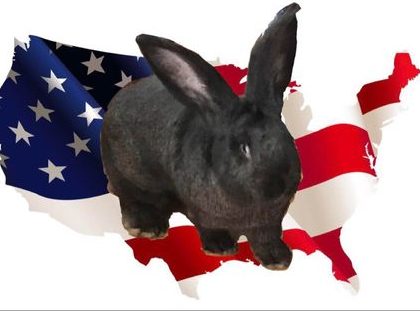
Learn the Differences of Giant Rabbit Breeds
“What are the differences between a _______Giant and a ________ Giant?” First, let’s clarify that ALL GIANTS have been derived from the original Flemish Giant. As such, please understand that all of the giants are related, if you go far enough back into the gene pool. Additionally, each of these breeds received their country-specified name due to the fact that Flemish Giants had been imported into other countries, and the offspring born in those countries were selectively bred and then re-named as that country’s giant breed of rabbit.
DIFFERENCES EXPLAINED
The typical comment is: “If it’s really just Flemish, then why not just buy a Flemish and be done with it?” This is why! Each country has their own methods and most-desirable traits. Those desired traits, when very strictly and selectively have been bred for, over many generations, prove to be the strongest quality of that breed. In laymen’s terms this begins the explanation of differences between breeds. One breed will have a wider style body, another will have a bigger head, or longer ears, and so forth and so on, plus these breeds have specific color allowances. For instance, one breed may only be and will only produce a grey rabbit and another breed will produce another variety of colors. So, what this boils down to is this: what used to be a single breed of rabbit, thru various manipulations and gene mutations, has now became multiple different breeds.
Flemish Giants

Flemish Giants have a very definitive mandolin shape over the top of their body, legs are typically a little longer than those of a Conti, and are very powerful; they also tend to have a more narrow head, pointed muzzle, and shorter, more narrow erect-ears (approximately 6″ long) which are typically more pointed at the tips. The shoulders are slightly tapered down from hindquarter width. The ARBA recognized colors include sandy, fawn, black, blue, light gray, steel, & white with red eyes only. {notice the difference in poses in the pics} **Note: this information is in strict regard for the American Standard Version of Flemish Giant – not to be confused with the Flemish Giants in other countries.
Continental USA Giants

Conti’s, as they are commonly referred to, have somewhat of an arched body (the arch is on the under-side of body, such as a Checkered Giant – which can be seen when posed correctly), wide, and longer style body. Their heads are large and have a blockier appearance than Flemish, and their shoulders are to be broad, from side to side. Another difference is that between the ears of a Flemish and Conti are that the Conti’s ears are rounded at the tips, wider across the center, and longer & should be the minimum length of 25% of the length of the body. Their legs are thick, heavy, and powerful. The BRC recognized colors include chestnut agouti, red agouti, black, chinchilla, opal, yellow, and white with red or blue eyes. {notice the difference in poses in the pics}
LEARN THE CONTINENTAL USA GIANT RABBIT WORKING STANDARDS
German Giant

German Giants have a wide, cylindrical style body with a massive, a very large & blocky head, long erect ears that are wide and often rounded at the tip, with short, very thick & strong legs; only in the color of grey
European or British Giant

British Giants have a broad, flat body with a more refined head and often a more pointed muzzle, ears are erect, may or may not have rounded tips, and typically are longer and just a little bit narrower than that of the Germans.
Belgian Giant
The original TRUE Belgian Giants are now extinct. They were created by crossing a Belgian Hare to a Flemish Giant in 1900. The color was a definitive maroon – in shades of dark, medium, and light. Their average weight was about 18lbs. The breed was imported into the USA in July of 1900, but never passed recognition status via the ARBA. The body was long & slender, like a Belgian Hare, with a large, round head. ~~ HOWEVER, ~~ There are giants which also are referred to as Belgian Giants which fit the above descriptions; these giants most closely resemble the German Gray’s in regard to type, but in the wider variety of colors – seen in the British Giants.
